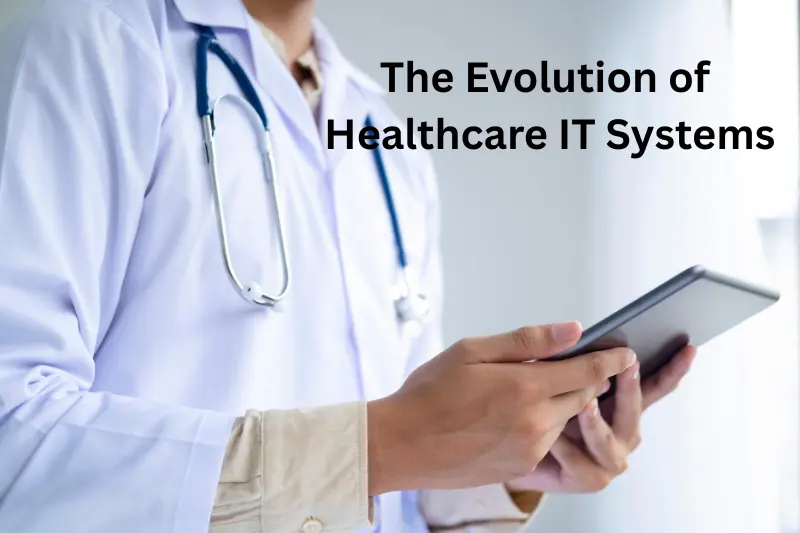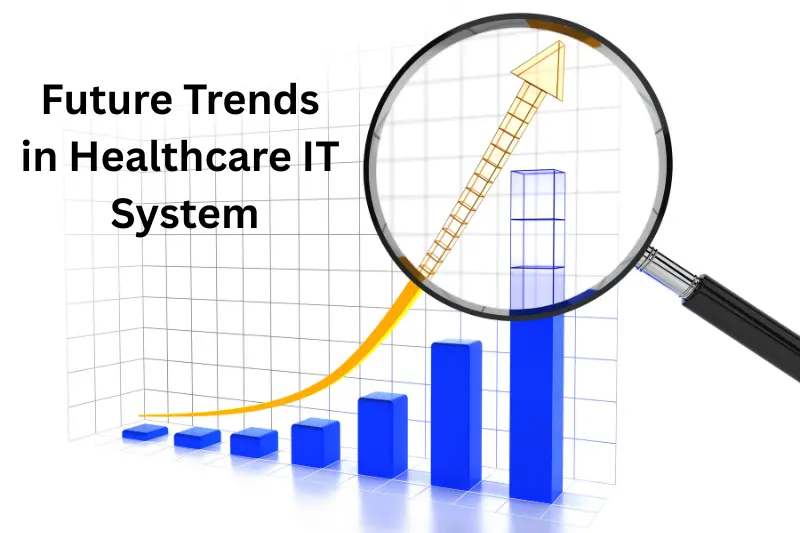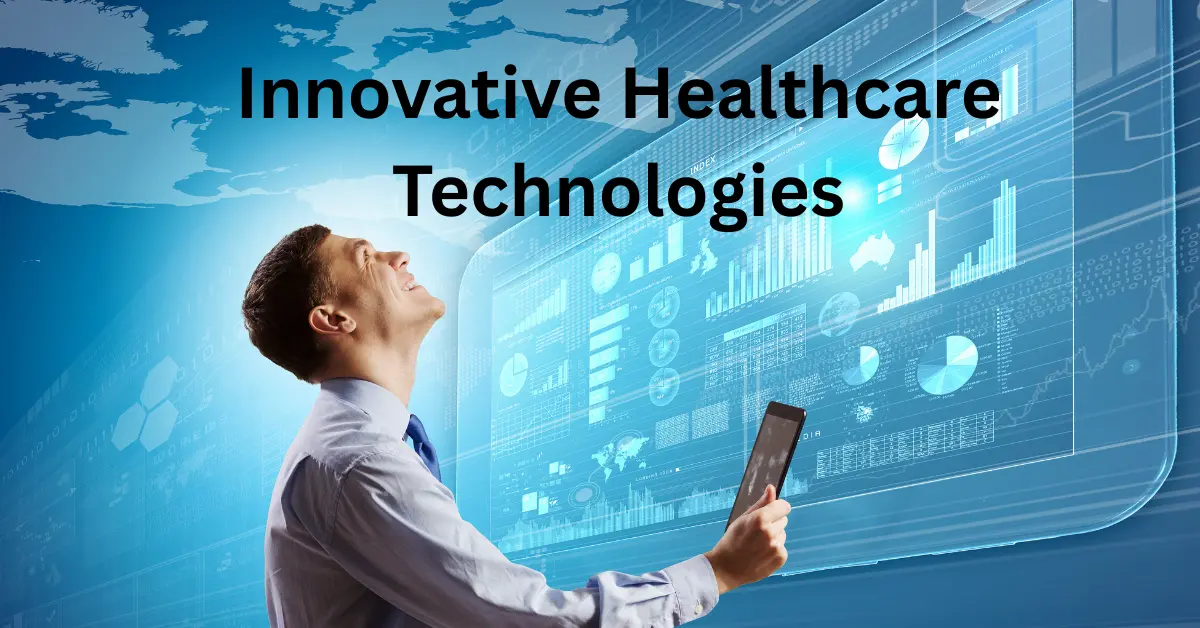Imagine a world where your medical history is instantly accessible to any doctor you visit, where AI predicts health issues before they arise, and where your smartwatch alerts your physician about irregular heartbeats in real-time. This isn’t a scene from a sci-fi movie—it’s the reality being shaped by Healthcare IT Systems. In today’s fast-paced digital age, the integration of technology into healthcare isn’t just beneficial; it’s essential.
From streamlining administrative tasks to enhancing patient care, these systems are revolutionizing the medical landscape. Let’s delve into the transformative world of Healthcare IT Systems and explore how they’re reshaping our health experiences.
The Evolution of Healthcare IT Systems

From Paper to Digital: A Historical Perspective
- Traditional Record-Keeping: For decades, patient information was stored in paper files, leading to challenges in accessibility, storage, and data loss.
- The Digital Shift: The late 20th century saw the introduction of Electronic Health Records (EHRs), marking the beginning of digital transformation in healthcare.
- Modern-Day Integration: Today, Healthcare IT Systems encompass a range of technologies, from AI-driven diagnostics to telemedicine platforms, ensuring comprehensive patient care.
Core Components of Modern Healthcare IT Systems
Electronic Health Records (EHRs)
- Centralized Data: EHRs store patient information in a centralized digital format, allowing for easy access and updates.
- Interoperability: Modern EHRs are designed to communicate seamlessly with other systems, ensuring continuity of care across different healthcare providers.
- Enhanced Patient Engagement: Patients can access their health records, lab results, and medication histories, promoting proactive health management.
Telemedicine Platforms
- Remote Consultations: Patients can consult with healthcare providers via video calls, reducing the need for in-person visits.
- Accessibility: Telemedicine bridges the gap for patients in remote areas, ensuring they receive timely medical advice.
- Cost-Effective: Reduces overhead costs for clinics and hospitals by minimizing physical infrastructure needs.
Artificial Intelligence (AI) and Machine Learning
- Predictive Analytics: AI algorithms analyze patient data to predict potential health risks, enabling early interventions.
- Diagnostic Assistance: Machine learning models assist in diagnosing conditions by analyzing medical images and patient histories.
- Operational Efficiency: AI streamlines administrative tasks, such as appointment scheduling and billing, enhancing overall efficiency.
Internet of Medical Things (IoMT)
- Connected Devices: Wearables and medical devices collect real-time health data, transmitting it to healthcare providers for monitoring.
- Continuous Monitoring: Patients with chronic conditions benefit from continuous health monitoring, leading to timely interventions.
- Data-Driven Insights: Aggregated data from IoMT devices provide insights into patient health trends, aiding in personalized treatment plans.
Benefits of Implementing Healthcare IT System
Enhanced Patient Care
- Timely Interventions: Real-time data allows for quicker diagnoses and treatments.
- Personalized Treatment Plans: Data analytics enable tailored healthcare solutions based on individual patient histories.
Operational Efficiency
- Streamlined Processes: Automation reduces manual tasks, allowing healthcare professionals to focus more on patient care.
- Resource Optimization: Efficient scheduling and resource allocation reduce wait times and improve service delivery.
Data Accuracy and Security
- Reduced Errors: Digital records minimize the chances of misinterpretation or data loss.
- Enhanced Security Protocols: Advanced encryption and authentication measures protect patient data from breaches.
One read, and you’ll see things differently!
Achieve Mental and Physical Wellness with These Simple Tips
Discover Holistic Wellness Solutions for True Health & Balance
Achieve Your Health Goals with Personal Wellness Plans
Empowering Wellness Tips and Advice to Change Your Life
Game-Changing Medical Technology Advancements Today
Challenges in Adopting Healthcare IT Systems
High Implementation Costs
- Infrastructure Investment: Setting up digital systems requires significant financial resources.
- Training Expenses: Staff need comprehensive training to adapt to new technologies, adding to the costs.
Data Privacy Concerns
- Cybersecurity Threats: Healthcare data is a prime target for cyberattacks, necessitating robust security measures.
- Regulatory Compliance: Ensuring adherence to data protection regulations, such as HIPAA, is crucial.
Resistance to Change
- Cultural Barriers: Some healthcare professionals may be hesitant to adopt new technologies due to unfamiliarity.
- Workflow Disruptions: Transitioning from traditional methods can temporarily disrupt established workflows.
Future Trends in Healthcare IT System

Integration of Blockchain Technology
- Secure Data Sharing: Blockchain ensures tamper-proof records, enhancing trust in data integrity.
- Decentralized Systems: Promotes patient ownership of health data, allowing them to control access.
Advanced AI Applications
- Predictive Healthcare: AI will play a pivotal role in predicting disease outbreaks and patient health trajectories.
- Virtual Health Assistants: AI-driven chatbots will assist patients in scheduling appointments and answering health queries.
Expansion of Telehealth Services
- Global Reach: Telehealth will break geographical barriers, providing healthcare access to underserved regions.
- Diverse Specializations: From mental health to physiotherapy, various medical services will be accessible remotely.
Best Practices for Implementing Healthcare IT Systems
Stakeholder Engagement
- Inclusive Planning: Involve all stakeholders, including patients, in the planning and implementation phases.
- Feedback Mechanisms: Establish channels for continuous feedback to refine systems.
Continuous Training
- Regular Workshops: Organize training sessions to keep staff updated on system functionalities.
- Support Systems: Provide helplines or support teams to assist with technical issues.
Scalability Considerations
- Future-Proofing: Choose systems that can adapt to future technological advancements.
- Modular Designs: Implement modular systems that allow for easy upgrades and integrations.
Conclusion
The integration of Healthcare IT Systems is no longer a luxury but a necessity in modern medicine. As technology continues to evolve, these systems will play an even more significant role in ensuring efficient, secure, and patient-centric healthcare delivery. Embracing these advancements today paves the way for a healthier, more connected tomorrow.
FAQs
What are Healthcare IT Systems?
Healthcare IT Systems refer to the use of technology in managing health information and services, such as electronic health records, telemedicine, and clinical decision support tools.
How do Healthcare IT Systems benefit patients?
They improve access to medical records, enhance communication with providers, reduce wait times, and help patients manage their health more efficiently through digital tools.
Are Healthcare IT Systems secure?
Yes, when properly implemented, they use strong encryption, multi-factor authentication, and compliance standards like HIPAA to protect patient data from breaches and unauthorized access.
What is the role of AI in Healthcare IT Systems?
AI helps in diagnosing diseases faster, predicting health risks, automating administrative tasks, and personalizing patient treatment plans for better outcomes.
Can small clinics also use Healthcare IT Systems?
Absolutely, many systems are scalable and designed to support clinics of all sizes, offering cost-effective solutions for improving care and administrative efficiency.







